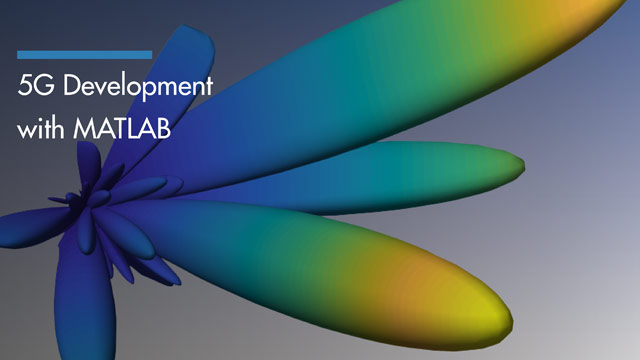传播通道模型
The LTE Toolbox™ product provides a set of channel models for the test and verification of UE and eNodeB radio transmission and reception as defined in[1]和[2]。The following channel models are available in the LTE Toolbox product.
Multipath fading propagation conditions
高速火车条件
移动传播条件
Multipath Fading Propagation Conditions
The multipath fading channel model specifies the following three delay profiles.
Extended Pedestrian A model (EPA)
扩展车辆模型(EVA)
Extended Typical Urban model (ETU)
这三个延迟曲线分别代表低,中和高延迟扩展环境。以下表中显示了这些通道的多路径延迟轮廓。
EPA延迟轮廓
| Excess tap delay (ns) | Relative power (dB) |
|---|---|
| 0 | 0.0 |
| 30 | –1.0 |
| 70 | –2.0 |
| 90 | –3.0 |
| 110 | –8.0 |
| 190 | –17.2 |
| 410 | –20.8 |
EVA延迟概况
| Excess tap delay (ns) | Relative power (dB) |
|---|---|
| 0 | 0.0 |
| 30 | –1.5 |
| 150 | –1.4 |
| 310 | –3.6 |
| 370 | –0.6 |
| 710 | –9.1 |
| 1090 | –7.0 |
| 1730年 | –12.0 |
| 2510 | –16.9 |
ETU Delay Profile
| Excess tap delay (ns) | Relative power (dB) |
|---|---|
| 0 | –1.0 |
| 50 | –1.0 |
| 120 | –1.0 |
| 200 | 0.0 |
| 230 | 0.0 |
| 500 | 0.0 |
| 1600 | –3.0 |
| 2300 | –5.0 |
| 5000 | –7.0 |
全部the taps in the preceding tables have a classicalDoppler光谱。除了多径延迟轮廓外,为每个多径褪色传播条件指定了最大多普勒频率,如下表所示。
| Channel model | 最大多普勒频率 |
|---|---|
| EPA 5Hz | 5 Hz |
| EVA 5Hz | 5 Hz |
| EVA 70Hz | 70 Hz |
| ETU 70Hz | 70 Hz |
| ETU 300Hz | 300 Hz |
In the case of MIMO environments, a set of correlation matrices is introduced to model the correlation between UE and eNodeB antennas. These correlation matrices are introduced inMIMO Channel Correlation Matrices。
高速火车状况
高速列车条件定义了具有单个多径组件的非倒入传播通道,其位置是及时固定的。该单一多径代表多普勒偏移,这是由于高速列车经过基站而引起的,如下图所示。

表达方式 是火车与EnodeB的初始距离,并且 is the minimum distance between eNodeB and the railway track. Both variables are measured in meters. The variableν是火车以每秒米为单位的火车的速度。在以下方程式中给出了由于移动列车而引起的多普勒偏移。
变量 是多普勒班次和 is the maximum Doppler frequency. The cosine of angle 由以下方程式给出。
For eNodeB testing, two high speed train scenarios are defined that use the parameters listed in the following table. The Doppler shift, , is calculated using the preceding equations and the parameters listed in the following table.
| Parameter | 价值 | |
|---|---|---|
| Scenario 1 | Scenario 3 | |
| 1,000 m | 300 m | |
| 50 m | 2 m | |
| ν | 350公里/小时 | 300 km/kr |
| 1,340 Hz | 1,150 Hz | |
Both of these scenarios result in Doppler shifts that apply to all frequency bands. The Doppler shift trajectory for scenario 1 is shown in the following figure.

The Doppler shift trajectory for scenario 3 is shown in the following figure.

对于UE测试,多普勒移动, , is calculated using the preceding equations and the parameters listed in the following table.
| Parameter | 价值 |
|---|---|
| 300 m | |
| 2 m | |
| ν | 300 km/hr |
| 750 Hz |
These parameters result in the Doppler shift, applied to all frequency bands, shown in the following figure.

移动传播条件
LTE中的移动传播通道定义了多路径组件的位置变化的通道条件。参考时间和第一个点击之间的时差,δτ,由以下方程式给出。
变量Arepresents the starting time in seconds andδωrepresents angular rotation in radians per second.
Note
多径组件之间的相对时间保持固定。
The parameters for the moving propagation conditions are shown in the following table.
| Parameter | Scenario 1 | Scenario 2 |
|---|---|---|
| Channel model | ETU200 | AWGN |
| UE speed | 120公里/小时 | 350公里/小时 |
| CP length | Normal | Normal |
| A | 10μs | 10μs |
| δω | 0.04 s–1 | 0.13 s–1 |
Doppler shift only applies for generating fading samples for scenario 1. In scenario 2, a single non-fading multipath component with additive white gaussian noise (AWGN) is modeled. The location of this multipath component changes with time, according to the preceding equation.
An example of a moving channel with a single non-fading tap is shown in the following figure.

MIMO Channel Correlation Matrices
在MIMO系统中,tran之间有相关性smit and receive antennas. This depends on a number of factors such as the separation between antenna and the carrier frequency. For maximum capacity, it is desirable to minimize the correlation between transmit and receive antennas.
There are different ways to model antenna correlation. One technique makes use of correlation matrices to describe the correlation between multiple antennas both at the transmitter and the receiver. These matrices are computed independently at both the transmitter-receiver and then combined by means of a Kronecker product in order to generate a channel spatial correlation matrix.
Three different correlation levels are defined in[1]。
低或没有相关性
medium correlation
高相关性
The parametersα和βare defined for each level of correlation as shown in the following table of correlation values.
| 低相关性 | 中等相关性 | 高相关性 | |||
|---|---|---|---|---|---|
| α | β | α | β | α | β |
| 0 | 0 | 0.3 | 0.9 | 0.9 | 0.9 |
The independent correlation matrices at eNodeB and UE,ReNB和RUE下表中分别为不同的天线(1、2和4)显示。
| Correlation | One antenna | Two antennas | 四个天线 |
|---|---|---|---|
| eNodeB |
|
|
|
| UE |
|
|
|
通道空间相关矩阵,R吐口水,由以下方程式给出。
符号⊗表示Kroneckerproduct. The values of the channel spatial correlation matrix,R吐口水, for different matrix sizes are defined in the following table.
| 矩阵大小 | R吐口水值 |
|---|---|
| 1×2 case |
|
| 2×2情况 |
|
| 4×2情况 |
|
| 4×4盒 |
|
参考
[1]3GPP TS 36.101. “Evolved Universal Terrestrial Radio Access (E-UTRA); User Equipment (UE) Radio Transmission and Reception.”第三代合伙项目;技术规格组无线电访问网络。URL:https://www.3gpp.org。
[2] 3GPP TS 36.104. “Evolved Universal Terrestrial Radio Access (E-UTRA); Base Station (BS) Radio Transmission and Reception.”第三代合伙项目;技术规格组无线电访问网络。URL:https://www.3gpp.org。
See Also
lteFadingChannel|lteHSTChannel|ltemovingchannel

